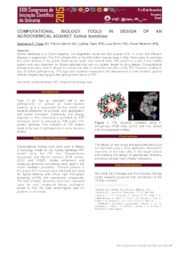Computational biology tools in design of an agrochemical against Xylella fastidiosa.
Computational biology tools in design of an agrochemical against Xylella fastidiosa.
Author(s): FULAZ, S. F.; CABRINI, F.; TASIC, L.; BORRO, L.; NESHICH, G.
Summary: Xylella fastidiosa is a Gram-negative, non-flagellated bacterium that causes CVC in citrus and Pierce?s disease in grapevines. The CVC affects 40% of the 200 million orange trees in São Paulo state. It colonizes the xylem vessels of the plants, blocking the water and nutrient flows. PilT protein is a part of the motility system and very important for Xyllela pathogenicity and our protein target for drug design. Computational biology tools were used to design the compound able to inhibit the formation of the PilT hexamer, leading to loss of Xyllela pathogenicity. This approach could be employed in the development of new inhibitors against different targets belonging to the same protein family of PilT.
Publication year: 2015
Types of publication: Abstract in annals or event proceedings
Observation
Some of Embrapa's publications are published as ePub files. To read them, use or download one of the following free software options to your computer or mobile device. Android: Google Play Books; IOS: iBooks; Windows and Linux: Calibre.
Access other publications
Access the Agricultural Research Database (BDPA) to consult Embrapa's full library collection and records.
Visit Embrapa Bookstore to purchase books and other publications sold by Embrapa.

